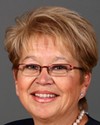Good afternoon.
As was mentioned, I am a lawyer. I was called to the Ontario bar in 1996. I practised aboriginal law with both the federal Department of Justice and the Indian Claims Commission of Canada. Since 2002, I have been a consultant and writer dedicated to aboriginal legal and policy issues. I have written many published reports, articles, and book chapters on aboriginal issues.
Today I am going to talk about a subject on which I was published this past fall, which is prostitution law reform as it might impact aboriginal women and girls. The premise of the paper was that despite the gross overrepresentation of aboriginal women among street-level sex trade workers and the murdered and disappeared, discussion of prostitution law reform rarely focuses on how to mitigate their sexual exploitation and their exposure to related routine violence.
Prostitution law reforms must address the situation of the most overrepresented and most vulnerable sex trade workers: aboriginal women.
I'm sure you've already heard quite a bit pertaining to aboriginal women's unequal status in Canadian society and about how that facilitates their increased vulnerability to exploitation and violence. Race and gender discrimination, combined with poverty, ill health, involvement in the sex trade, and other factors, compound that unequal status.
In addition to the extreme vulnerability of all women in the sex trade, women who solicit on the streets are particularly vulnerable. In one Vancouver study, one-third of the women reported that they had been attacked while working the streets.
Discrimination and aboriginal women's inequality in society also contribute to a perception that they are easy targets for violence and exploitation.
Social and economic marginalization, combined with addictions and other factors, have led to aboriginal women and girls being highly overrepresented as sex trade workers. I'll give you some statistics. In Winnipeg, between 70% of sexually exploited youth and 50% of adult sex workers are of aboriginal descent, and this is in a city in which aboriginal people make up approximately 10% of the population. Up to 40% of female and male sexually exploited youth and adults in Vancouver are aboriginal. And aboriginal women constitute at least one-third of the women who disappeared from Vancouver's downtown east side.
The increased risk of violence faced by all street sex workers is often particularly acute for aboriginal women, who are more likely to experience extreme poverty and to engage in substance abuse. Street-level sex workers are generally working for survival and are often drug addicted, sick, and likely to be unwanted in indoor venues. They may have mental health diagnoses, fetal alcohol spectrum disorder, and low education levels.
Colonization, residential schools, general community breakdown, social and economic marginalization, and a history of colonialist government policies--which I'm sure you've been hearing about--are all contributing factors to the overrepresentation of aboriginal women as sex trade workers. It is inextricably interconnected with the systemic and pervasive nature of aboriginal women's inequality in Canadian society.
Moving on to the legal issues, prostitution is technically legal in Canada, but certain Criminal Code prohibitions effectively create barriers. Communicating, operating a bawdy house, procurement, and living off the avails are all illegal. The result is that effectively the sex trade worker, the pimp, and the client are all criminalized. However, the law in Canada has led to unequal application. Essentially, a two-tiered sex trade has emerged. The more expensive off-street prostitutes operate pretty much with impunity, while those already most vulnerable and marginalized--street-level prostitutes, and often aboriginal women--are routinely arrested. Street prostitution makes up only 5% to 20% of all sex trade activities, yet it accounts for more than 90% of all prostitution-related incidents reported by the police.
While aboriginal women are particularly vulnerable, Canadian police have often failed to provide them with an adequate standard of protection. Police have been viewed as uncaring and inactive in the disappearances of both sex workers and aboriginal women. One significant barrier to improved relations between the police and sex trade workers is the ongoing criminalization of sex trade workers, who may be unwilling to turn to police or social services because they are engaging in criminal activity.
On decriminalization and legalization, both of these approaches are generally touted as a route to greater safety for the sex worker, allowing prostitutes to work indoors in protected environments. It would also increase their access to police, health, and social services. However, countries that have decriminalized and legalized prostitution—for example, New Zealand, Australia, Germany, and the Netherlands--have also seen an increase in human trafficking.
In Canada, while the Criminal Code and the Immigration and Refugee Protection Act have trafficking provisions, the issue of domestic trafficking in aboriginal women and girls is a problem that has barely begun to emerge on the radar. Regardless of the approach taken, some sex workers will continue to be street-based, particularly those who are most disadvantaged. For this reason, New Zealand provides a very interesting example. In 2003, New Zealand decriminalized adult prostitution. In 2007, the Prostitution Law Review Committee carried out a study of the impacts of that 2003 decriminalization. They concluded that impoverished New Zealand aboriginals make up a disproportionate number of prostitutes working the streets. Street-based workers are more likely than indoor-managed or private sex workers to report having been physically assaulted by a client, threatened by a client, held against their will, or raped in the previous 12 months before the study. So this was after decriminalization.
They found that one-tenth of all sex workers worked the street, which was a number comparable to that prior to decriminalization. Of the sample population in the study, one half was New Zealand European, and a third was Maori. The 2007 government evaluation notes that Maori ethnicity among street workers was 64%, despite the fact that they represented only 31% of the total sex trade. They also noted their ongoing exposure to violence and ongoing trepidation in going to police.
So looking at those preliminary results from 2007, we can see that the decriminalization legislation appears to have benefited indoor-managed and private workers, predominantly of New Zealand European descent. I think these results are an important consideration for Canadian prostitution law reform.
Not all women will be marketable for indoor venues. Even under legalization or decriminalization there will be street workers. Given current statistics, we have every reason to believe that aboriginal women would be as vastly overrepresented in this group, as the Maori are.
In comparison, Sweden was the first country to criminalize only the pimps and buyers of sex, rather than sex workers, in 1999. Prostitution is officially seen as sexual abuse and an act of violence against women. Decriminalizing the prostitute facilitates the goal of making it more feasible for women to report bad dates and attacks to police, assuming of course that there is a police will to act and better police-sex worker relationships are forged. In Sweden, some individuals still selling sexual services indicated that they felt more comfortable reporting crimes to the police.
In conclusion, statistics indicate that Canada's prostitution laws and their enforcement may be fostering a sub-class of endangered and criminalized street sex trade workers, and their face is all too often aboriginal. While law alone cannot provide the answer, prostitution law reform discourse in Canada has often been carried out blind to who decriminalization of the trade might benefit and who it might leave behind.
Decriminalization of the prostitute would ostensibly benefit all sex trade workers and be of greatest assistance to the most vulnerable: those working the streets who are most in need of police services and most often convicted. In the end, we must question which legal reforms will service and protect the most disadvantaged in an already marginalized class.
As far as specific recommendations for action, I would clearly recommend decriminalizing the prostitute or sex trade worker; greater emphasis on aboriginal women in the sex trade when discussing law reform; and, although I didn't talk about it too much, police race and cultural sensitization training.









